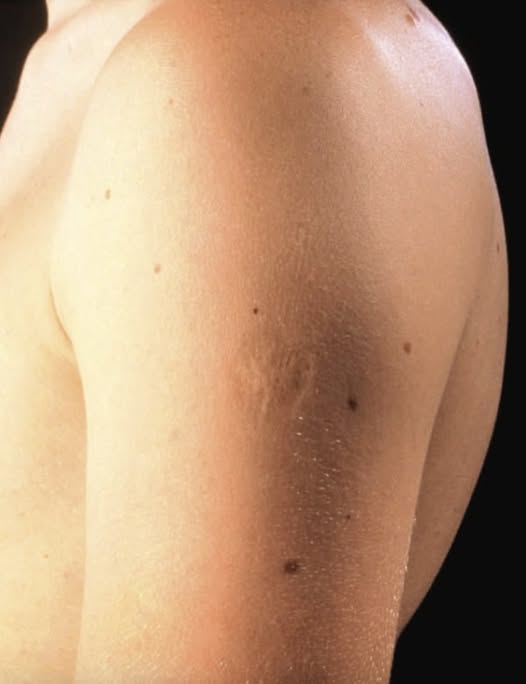I distinctly remember noticing a unique scar on my mother’s arm when I was young. It’s positioned high up, near her shoulder, resembling a ring of small indentations surrounding a larger one.
I can’t say why that particular detail caught my eye back then; it’s something I don’t recall. I only know that it did, but like many things, I eventually forgot about it over the years.

Of course, I didn’t completely forget it existed (it’s still right where it always was), but I did lose track of the fact that I was once curious about what had caused it. Maybe I asked my mother about it once, and she provided an explanation. If she did, though, that slipped my mind too.
That was until a few summers ago when I assisted an elderly woman off a train and noticed the exact same scar in the same spot as my mother’s. Naturally, my curiosity was sparked, but with the train ready to move on to my stop, I couldn’t exactly inquire about the story behind her scar.
Instead, I called my mother, and she told me that she had actually explained it to me more than once – clearly, my mind didn’t consider that information significant enough to remember – and that her scar was a result of the well-known smallpox vaccine.
Smallpox is a viral infectious disease that once posed a serious threat to humanity. It leads to a severe skin rash and fever, and during the most widespread outbreaks in the 20th century, it claimed the lives of about 3 out of 10 infected individuals, according to the Centers for Disease Control and Prevention. Many others who survived were left with disfigurements.
Thanks to the effective and widespread rollout of the smallpox vaccine, the virus was officially declared “extinct” in the United States in 1952. In fact, by 1972, smallpox vaccinations were no longer included in the routine vaccination schedule.
However, until the early ’70s, all children received the smallpox vaccine, which left a very distinct mark. You could think of it as the original vaccine passport: a scar that indicated you had been successfully vaccinated against smallpox.
And yes, you guessed it, that very scar is what my mother has (just like nearly everyone else in her age group).
So, why did the smallpox vaccine leave a scar?
The scarring from the smallpox vaccine was a result of the body’s healing process. The vaccine was administered in a unique manner compared to many vaccines used today, utilizing a special two-pronged needle.

The individual giving the vaccine performed several punctures in the skin (instead of the single one typically associated with modern vaccines) to inject the vaccine into the dermis (the layer beneath the epidermis).
The virus contained in the vaccine then began to replicate, leading to the formation of round bumps. These bumps eventually turned into vesicles (small blisters filled with fluid), which would later burst and form scabs over time.
This process results in the well-known scar we’ve mentioned in this article.
Do you have a scar from the smallpox vaccine? Share your experience in the comments!


